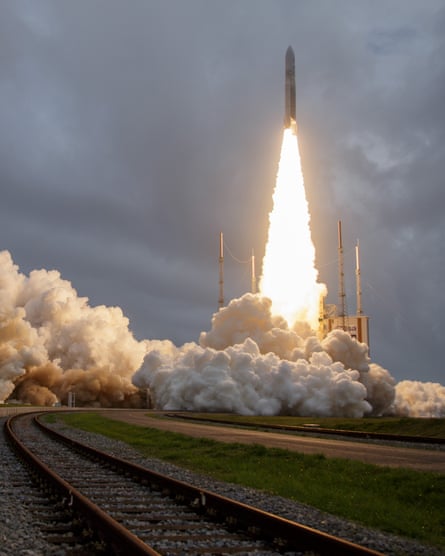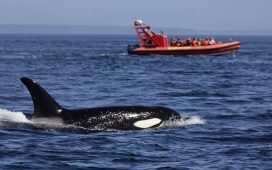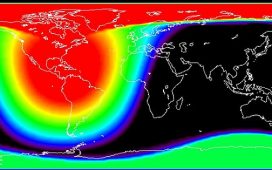There is a distant world where quartz crystals float above a searing hot, puffy atmosphere. Vaporised sand grains, not water droplets, form the clouds that fill the sky on Wasp-107b, a planet 1,300 light years from Earth.
Then there is GJ1214, the sauna planet. With a mass eight times that of Earth, it orbits its parent star at a distance that is one-seventieth of the gap between Earth and the sun and seems to be coated in a thick dense atmosphere containing vast amounts of steam.
Or there are the giant, Jupiter-sized planets of the Orion Nebula which have been discovered free-floating in space, rogue worlds that appear to be unconnected to any parent star – to the bafflement of astronomers.
These strange, remote planets could not be more diverse or dramatically different from each other – although they do share one common feature. Their wonders are now being revealed by the James Webb space telescope (JWST).
Launched on Christmas Day 2021, the $10bn robot observatory is currently transforming our knowledge of planets of our galaxy. “It took six months to position the telescope and get its systems operating properly – which means 2023 was its first full calendar year of operation,” said astrophysicist Dr Hannah Wakeford, of Bristol University. “Results have surpassed all our expectations.”
The JWST is made up of a 6.5-metre, gold-plated mirror; a sunshield that is the size of a tennis court; and an array of complex instruments that are cooled to temperatures only a few degrees above absolute zero. These features allow the telescope to observe the heavens in infra-red radiation, revealing details of the universe just after its Big Bang birth 13.8bn years ago, and images of stars being born in dust clouds.
However, the JWST is providing science with a further gift – for infra-red radiation also turns out to be ideal for studying extrasolar planets, or exoplanets, as worlds that orbit other stars are known. In doing so the telescope is triggering an astronomical revolution.
For centuries, the only planets known to humans were the few we could see in our solar system. But was the sun’s family typical, scientists wondered? Were planets plentiful elsewhere in the galaxy or were they rare? These questions were of crucial importance because the latter scenario – a cosmic paucity of planets – would mean extraterrestrial life was also likely to be scarce.
The trouble for astronomers was the simple fact that stars are very bright but planets are much smaller and very much dimmer, and could not be detected beside their brilliant celestial parents. It was not until the end of the last century that a new generation of highly sensitive cameras, fitted to telescopes and orbiting observatories, were able to pinpoint the slight dimmings of exoplanets as they passed in front of stars.
After the first few of these transit observations were made, discoveries began to multiply dramatically. Today the total number of observed exoplanets stands at 5,566, according to Nasa’s extrasolar planet archive.
Crucially several hundred are relatively close to Earth and these are now ripe for study with the JWST, say astronomers. Wasp-107b and its quartz clouds and the rogue worlds of the Orion Nebula have already been scrutinized along with a host of other exoplanets.
“Having found all these worlds we are now in the fortunate position of being able to study them in detail, analyse their atmospheres and even map their features when, three decades ago, we did not know for sure if they existed at all,” said astrophysicist Prof Jayne Birkby of the University of Oxford.
An early target for astronomers using the JWST has been Trappist-1, a small, cool star of a type known as a red dwarf. Forty light years from Earth, it has a family of seven small rocky worlds, three of them lying within a region known as the habitable zone. Here conditions are not too hot and not too cold to prevent water from existing as a liquid, a prime requirement for life to flourish, say astrobiologists.
However, analyses – using the JWST – of two of the star’s innermost planets, Trappist-1b and Trappist-1c, have revealed they possess either no atmosphere or only a very thin one. Further JWST studies of the rest of the system are now being planned. “Trappist-1’s system still looks promising if you are seeking a world that might support life,” said astronomer Dr Jo Barstow of the Open University.

Photograph: Bill Ingalls/UPI/REX/Shutterstock
One special problem does affect studies of stars like Trappist-1, however. Red dwarfs are spotty. This may not sound like a terminal condition but it does have serious implications, Barstow added. “Our own sun has sunspots that are associated with intense solar activity but it has relatively few. By contrast, Trappist-1 has dozens of spots that change all the time and that makes it very difficult to differentiate between these and features of a planet’s atmosphere. The Trappist-1 system is not going to give up its secrets easily.”
Ultimately, astronomers using the JWST to seek out signs of extraterrestrial life are looking for a set of biological markers known as the Big Four: oxygen, carbon dioxide, water and methane. Their presence in the atmosphere of an exoplanet would be a strong sign that life of some kind exists there.
“The exact proportions would vary, however,” said Birkby. “Earth has an atmosphere that is 21% oxygen but that would have been very different 2.5bn years ago when there would have been very little oxygen. The great oxidation event – which occurred when cyanobacteria in the oceans started producing oxygen through photosynthesis – had not yet started. There was still life on Earth at that time, however.”
What scientists will make of a world whose atmosphere contains all of the Big Four remains to be seen. “In present-day Earth-like amounts, it would be hard not to get excited,” added Birkby.
Others sound a note of caution, however. “Even if you get a perfect profile of gases and water vapour in exoplanet atmosphere, you will still only be making indirect measurements, and to say you have definitely found life based on those is hard to justify,” said Barstow.
“Even if you were 99% certain about the claim, there would still be a nagging doubt that what you were observing was due to non-biological phenomena.”
The life of the James Webb space telescope promises to be an intriguing one – and lengthy. The JWST’s flight, on an Ariane 5 rocket, from the European Space Agency’s launchpad in Kourou in French Guiana to its current position in orbit round the sun, was near flawless. The observatory used very little fuel to manoeuvre itself into its exact target location – and that means there will be extra to allow the telescope to orient itself for far longer than anticipated. Space engineers have calculated the JWST’s expected 10-year lifetime could be doubled.
“In many ways that is very good news,” said astronomer Professor Stephen Wilkins, of the University of Sussex. “We will be able to do a lot more science with it now. However, the telescope will decay as the years go by as it is struck by meteorites and cosmic rays. That will slowly degrade its performance so we should make the most of it while it is operating at near optimum conditions.”
Wilkins’s own speciality is the study of galaxies and black holes. “Nevertheless, I think the most exciting science that will be done by the JWST concerns exoplanets,” he said. “We are going to learn so much about the chemistry of their atmospheres and are going to find some very strange and bizarre worlds out there. It is tremendously exciting.”










